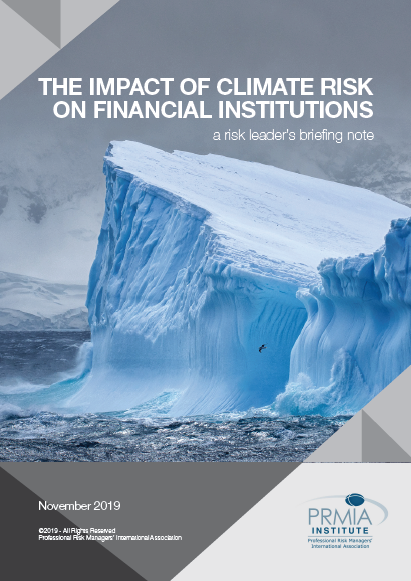The Impact of Climate Risk on Financial Institutions

Climate is changing. Empirical evidence abounds in all continents, with rising temperatures and an increased frequency of severe weather events.
The transition to a new Green Economy represents a valuable opportunity for many Financial Institutions. It also brings about new set of risks.
In the PRMIA Institute’s new white paper, The Impact of Climate Risk on Financial Institutions, we aim to provide Risk Leaders with an overview of the critical industry changes associated with different climate change scenarios. This provides insight into the key risks and leads naturally to a discussion of how these risks can be managed.
Download the white paper now to access your risk leader briefing.
Key Messages
Climate is changing, and this changes the risk profile of a Financial Institution (FI):
Physical risks are increasing, impacting the value of physical assets such as real estate.
Transition risks are appearing and will negatively impact the value of ‘brown’ assets.
Green finance is growing, and Risk Managers will need to be able to assess proposals.
Every firm will require a climate strategy, which should be approved by the Board of Directors.
Risk management needs to evolve:
Climate is fundamentally a credit/investment concern. A sector-by-sector, client-by-client approach is required to assess all exposures.
Scenario Analysis needs to evolve: climate-based scenario analysis is much harder than anything currently done and will need new computational approaches, data and methodologies.
Every firm will require a climate risk management strategy
The risk profession will need to evolve: PRMIA is committed to supporting this evolution.